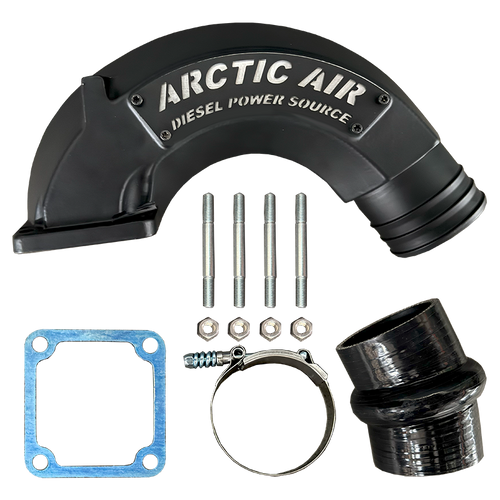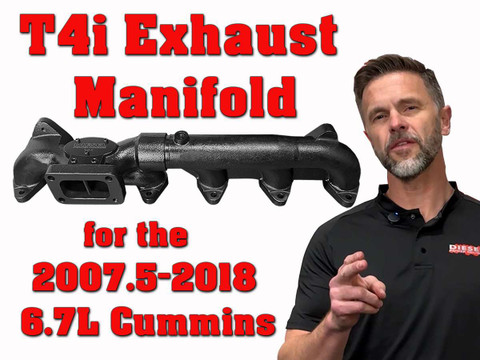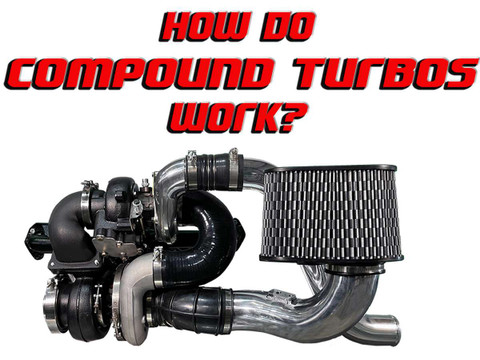This page highlights second-gen 24-valve upgrades and fit notes. If you need 12-valve or 6.7L parts, use the links below. Detailed specs, year breaks, and exact kit contents are listed on each product page.
Why upgrade your 1998.5–2002 24V Cummins
- Stronger towing and midrange: Flow-optimized manifolds and right-sized turbos help hold speed on grades with lower EGT.
- Quicker spool and response: Efficient collectors and clean hot-side routing improve low-rpm boost for street and tow manners.
- Durability: Thick-wall castings and flat-machined flanges resist warping and leaks through repeated heat cycles.
- Clean fitment: Components modeled around second-gen bay clearances for service access and repeatable installs.
What’s the recommended turbo setup for towing on a 24V
For heavy towing, a compound (S300 over S400) configuration delivers early spool, strong midrange, and cooler EGT on long pulls. DPS compound kits are engineered for 1998.5–2002 second-gen packaging, with piping and clearances matched to the chassis, making them a reliable tow solution from ’98.5 through ’02.
Benefits of a Turbonator® VGT on a 24V
A Turbonator® VGT exhaust housing can improve low-end response—often spooling ~200–300 rpm sooner—and supports exhaust braking for better downhill control. It lets you run a larger charger without giving up drivability at lower speeds, which is valuable for mixed street/tow use.
How to choose parts for a second-gen 24V
- Towing & daily: Stock-replacement or T3 manifold with a quick-spooling S300-class turbo. Monitor EGT on first towing runs.
- Street performance: Mid-size S300 or compact S400 with the correct turbine A/R to hold speed on grades without excessive lag.
- Higher-fuel builds: Larger airflow with freer housings and adequate intercooling; plan converter, gearing, and brakes for target power.
Fitment checklist for 1998.5–2002
- Confirm T3 vs T4/T4i manifold flange for your turbo choice.
- Verify downpipe route, intercooler path, and clearance at steering shaft, heater box, and A/C lines.
- Plan new gaskets, quality hardware, heat shielding, and sensor ports if logging EGT or drive pressure.
Install & first-drive notes
- Use new gaskets and quality hardware; torque in sequence on a cold engine.
- Pressure-test the charge-air system before first start; check for any pre-turbine leaks.
- Monitor boost and EGT on shakedown; re-check fasteners after heat cycles if specified.
Shopping related categories? 5.9 Cummins Manifolds (12V, 24V, common-rail) | S300 Single Turbos | S400 Single Turbos | Add-A-Turbo (Compound-Over-Stock) Kits. For 12V parts see Second Gen 12V (1994–1998) or First Gen 12V (1989–1993).
Frequently asked questions
Do I need tuning after a manifold swap on a 24V
A manifold alone typically doesn’t require tuning. If turbo size or fueling changes, calibration can optimize response and shift strategy.
Will a performance manifold lower tow temps
Yes. Lower drive pressure and smoother flow usually reduce EGT on long pulls and help the turbo stay in an efficient range.
T3 vs T4/T4i on a second-gen 24V
Choose T3 for most stock-frame or quick-spool goals. Move to T4/T4i when stepping up airflow for future headroom or larger single/compound setups.
Is compound required for towing
Not always, but compounds provide the widest efficiency window for heavy GCW, elevation, or heat. They maintain response while keeping EGT in check.

















